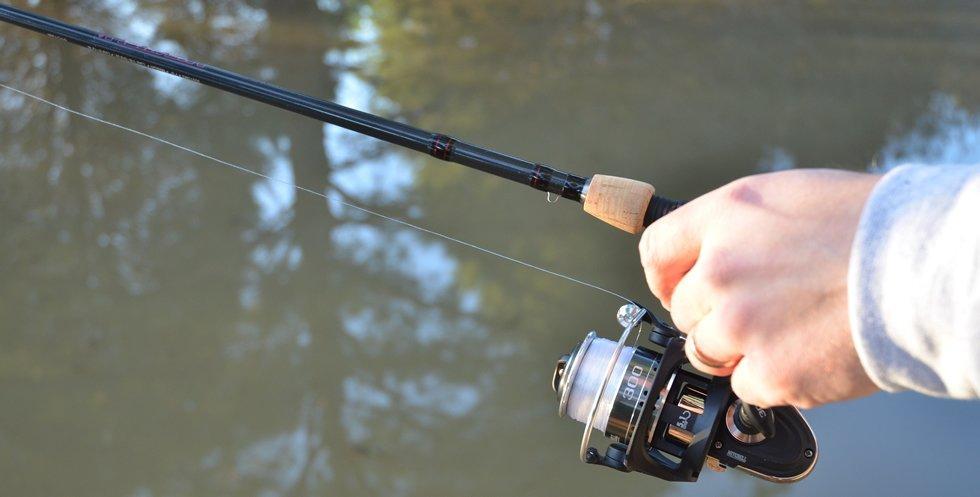Introduction to Fishing Line and Reels
Fishing line is the crucial connection between your rod and reel and the fish you’re trying to catch. Choosing the right line and properly spooling it onto your reel is essential for successful fishing. In this comprehensive guide, we’ll cover the different types of fishing line, how to spool them onto various reel types, and tips for maintaining your line.
Types of Fishing Line
There are several types of fishing line, each with its own advantages and disadvantages. Understanding the characteristics of each type will help you select the best line for your fishing needs.
Monofilament Line
Monofilament is the most common type of fishing line. It’s made from a single strand of nylon and is known for its low visibility in the water, affordability, and ease of use.
- Pros: Inexpensive, low visibility, easy to tie knots
- Cons: Prone to memory (coiling), less abrasion resistance
Fluorocarbon Line
Fluorocarbon is made from a dense, refractive material that makes it nearly invisible underwater. It’s more abrasion-resistant than monofilament and sinks quickly.
- Pros: Highly invisible, abrasion-resistant, sinks quickly
- Cons: More expensive, less supple than monofilament
Braided Line
Braided line is made from multiple strands of synthetic fibers woven together. It’s incredibly strong, thin, and sensitive, with little to no stretch.
- Pros: Extremely strong, thin diameter, no stretch
- Cons: More visible underwater, can be difficult to tie knots
Hybrid Line
Hybrid lines combine the benefits of different line types, such as a fluorocarbon leader with a braided mainline. This allows you to take advantage of the strengths of each material.
- Pros: Combines the benefits of different line types
- Cons: More expensive, can be more complex to set up
Spooling Fishing Line onto Reels
Spooling Monofilament or Fluorocarbon Line
- Attach the spool of line to a line winding device or secure it to a table or rod holder. Make sure the line comes off the spool in a counterclockwise direction.
- Tie the line to the reel spool using an improved clinch knot or uni knot. Moisten the knot with saliva or water to help it slide together tightly.
- Apply even pressure to the line as you wind it onto the reel spool. Keep the line tight and avoid creating any loose coils or twists.
- Leave a small gap (about 1/8 inch) between the line and the lip of the reel spool. This will prevent the line from slipping off the spool during casting.
- Cut the line and secure the end to the reel spool with tape or a rubber band to prevent it from unraveling.
Spooling Braided Line
- Attach the spool of braided line to a line winding device or secure it to a table or rod holder. Make sure the line comes off the spool in a counterclockwise direction.
- Tie the braided line to the reel spool using a uni knot or double uni knot. Moisten the knot with saliva or water to help it slide together tightly.
- Apply even pressure to the line as you wind it onto the reel spool. Keep the line tight and avoid creating any loose coils or twists.
- Leave a small gap (about 1/8 inch) between the line and the lip of the reel spool. This will prevent the line from slipping off the spool during casting.
- Cut the line and secure the end to the reel spool with tape or a rubber band to prevent it from unraveling.
- Add a monofilament or fluorocarbon leader line to the end of the braided line. This will help protect the braided line from abrasion and make tying knots easier.
Spooling Hybrid Line
- Attach the spool of braided line to a line winding device or secure it to a table or rod holder. Make sure the line comes off the spool in a counterclockwise direction.
- Tie the braided line to the reel spool using a uni knot or double uni knot. Moisten the knot with saliva or water to help it slide together tightly.
- Apply even pressure to the line as you wind it onto the reel spool. Keep the line tight and avoid creating any loose coils or twists.
- Leave a small gap (about 1/8 inch) between the line and the lip of the reel spool. This will prevent the line from slipping off the spool during casting.
- Cut the line and secure the end to the reel spool with tape or a rubber band to prevent it from unraveling.
- Tie a fluorocarbon or monofilament leader line to the end of the braided line using an improved clinch knot or double uni knot.
Maintaining Your Fishing Line
Regular maintenance is crucial for keeping your fishing line in top condition. Here are some tips for maintaining your line:
Checking for Damage
Regularly inspect your line for signs of wear, such as fraying, nicks, or discoloration. If you notice any damage, cut off the affected section and retie your lure or leader.
Cleaning and Lubricating
Over time, your line can accumulate dirt, debris, and salt buildup. Clean your line by wiping it down with a soft cloth and a small amount of line conditioner or lubricant. This will help prevent premature wear and tear.
Storing Properly
When not in use, store your fishing line in a cool, dry place away from direct sunlight. Avoid storing line on the reel for extended periods, as this can lead to memory and decreased performance.
Replacing Regularly
Even with proper care, fishing line has a limited lifespan. Replace your line at the beginning of each season or after a significant catch. Regularly replacing your line will ensure that you always have fresh, strong line on your reel.
Summary Table of Fishing Line Types
| Line Type | Pros | Cons |
|---|---|---|
| Monofilament | Low visibility, easy to tie knots | Prone to memory, less abrasion-resistant |
| Fluorocarbon | Highly invisible, abrasion-resistant | More expensive, less supple |
| Braided | Extremely strong, thin diameter, no stretch | More visible underwater, difficult to tie knots |
| Hybrid | Combines benefits of different line types | More expensive, complex to set up |
For more information on fishing line and equipment, you can refer to the U.S. Fish & Wildlife Service’s guide on fishing basics.
Frequently Asked Questions (FAQ)
What is the best type of fishing line for beginners?
Monofilament is generally the best choice for beginners due to its affordability, ease of use, and low visibility in the water.
How do I know if my fishing line needs to be replaced?
Look for signs of wear, such as fraying, nicks, or discoloration. If you notice any damage, it’s best to replace the affected section or the entire line.
Can I use braided line on a spinning reel?
Yes, you can use braided line on a spinning reel, but it’s important to add a monofilament or fluorocarbon leader to prevent the line from slipping through the reel’s line guides.
How do I tie a fishing line to my reel?
The most common knots for attaching line to a reel are the improved clinch knot and the uni knot. Be sure to moisten the knot with saliva or water to help it slide together tightly.
What is the purpose of a leader line?
A leader line is a short section of line, typically made from fluorocarbon or monofilament, that connects your main line to your lure or hook. It provides additional strength and abrasion resistance.
How do I prevent my fishing line from twisting?
To prevent line twist, use a swivel when attaching your lure or leader. Avoid over-spinning your reel handle during retrieval, and consider using a line conditioner or lubricant to reduce friction.
Can I reuse fishing line from a previous season?
It’s generally not recommended to reuse fishing line from a previous season, as it may have weakened over time due to exposure to sunlight, saltwater, and other environmental factors.
How do I properly store my fishing line?
Store your fishing line in a cool, dry place away from direct sunlight. Avoid storing line on the reel for extended periods, as this can lead to memory and decreased performance.
What is the best way to clean my fishing line?
Clean your line by wiping it down with a soft cloth and a small amount of line conditioner or lubricant. This will help remove dirt, debris, and salt buildup, preventing premature wear and tear.
How often should I replace my fishing line?
Replace your line at the beginning of each season or after a significant catch. Regularly replacing your line will ensure that you always have fresh, strong line on your reel.
Conclusion
Properly lining your fishing pole is essential for successful fishing. By understanding the different types of fishing line, learning how to spool them onto various reel types, and following best practices for line maintenance, you’ll be well on your way to catching more fish and enjoying your time on the water. Remember to always prioritize safety and follow local fishing regulations. If you have any further questions or need additional guidance, feel free to consult with experienced anglers or reach out to fishing organizations for support.



